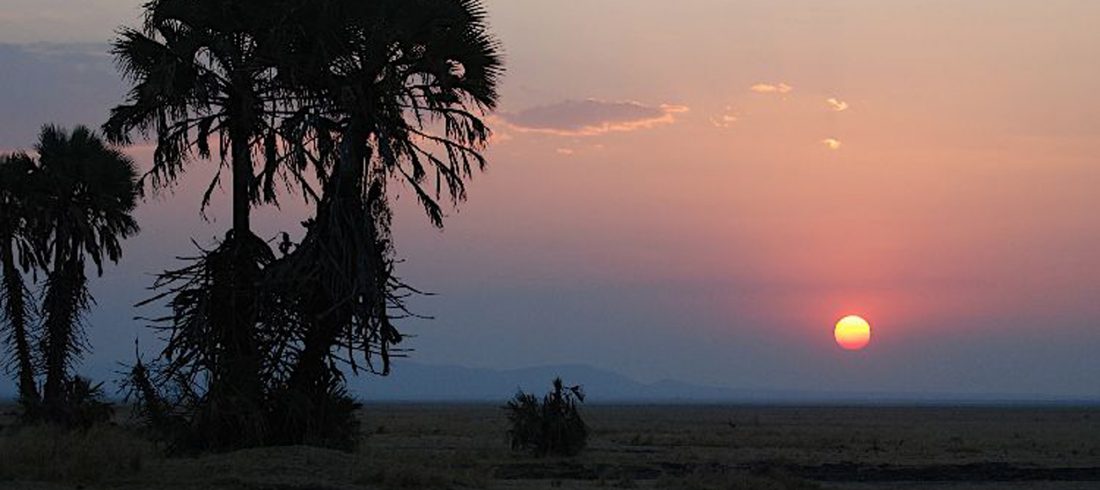
Azure blue waters, sandy beaches, mountains, rainforest and exotic wildlife – all in one! When you travel all the way to Mahale Mountains, you really should combine your trip with remote and secluded Katavi National Park, some of the most unspoiled and untamed wilderness in Africa.
The lulling engine sounds, and the rocking of the waves get you into a relaxing mode, but the expectations of your adventure is tingling like butterflies in your stomach.
Getting close to the shore you will see the silky white coves, overshadowed by a chain of wild, jungle-draped peaks towering almost two kilometres above the lake. You can feel the excitement of getting close to the remote and mysterious Mahale Mountains.
As the small wooden boat reaches the beautiful shore, and you jump out on the long sandy beach, you are ready to start your adventure of exploring Mahale Mountains and the chimp tracking.
You should consider doing the trip to Mahale Mountains to see the home of the Chimpanzees. These will attract you, and want to give you a wonderful holiday destination.
While resting in the shadow of a huge tree, only your own thoughts as company, you will always go back and let your spirit fly over the mountains of Mahale.
Over the heads of the other wild animals, the fauna and the much spoken of Chimpanzees, in the eyes of the African Vulture feasting at the table of the Chimp’s leftovers, along the flying, gentle nice birds with the view of Lake Tanganyika as a frame for all the wonders.
You’ll witness the dawn of a new day from the highest peak of the Mahale Mountains at 2786 m, remembering your breathing while hiking in these forests, remembering the nights camping with all the forest and wildlife sounds just outside your tent.
In the secluded and remote areas of West Tanzania, deep in the heart of Africa, you can find beach idyll scenes similar to the beaches of the Indian Ocean. Inaccessible by road, you have to use a boat to reach the beauty of Mahale Mountains National Park, one of the most exotic and hidden wonders of Africa, that offer you one of the most ultimate animal interactions.
Because of its inaccessibility Mahale Mountains is a national park so remote that is struggles to get its annual international visitors number into three figures, even though it is often referred to as the Holy Grail amongst the safari destinations.
Mahale Mountains is home to some of Africa’s last remaining wild chimpanzees: a population of roughly 800 (only 60 individuals forming what is known as “M group”), habituated to human visitors by a Japanese research project founded in the 1960s.
Tracking the chimps of Mahale is a magical experience. The guide’s eyes pick out last night’s nests – shadowy clumps high in a gallery of trees crowding the sky. Scraps of half-eaten fruit and fresh dung become valuable clues, leading deeper into the forest. Butterflies flirt in the dappled sunlight.
Then suddenly you are in their midst: preening each other’s glossy coats in concentrated huddles, squabbling noisily, or bouncing into the trees to swing effortlessly between the vines.
The area is also known as Nkungwe, after the park’s highest mountain, held sacred by the local Tongwe people, and at 2,460 metres (8,069 ft) the highest of the six prominent points that make up the Mahale Range.
Although the chimpanzees are the star attraction, and are amongst one of the most studied primates in Africa, the rest of the regions natural environment has remained relatively hidden. The slopes support a diverse forest fauna, including readily observed troops of red colobus, red-tailed and blue monkeys, and a kaleidoscopic array of colourful forest birds.
The park protects 50 other mammalian species, which means you can be lucky to see some different primates or antelopes, but some people are also lucky enough to spot the rare but elegant leopard.
During your morning walk in the forest it is usual to come across many signs of different wildlife, such as porcupines and hippopotamus. You may also see the warthog and bushbuck wandering along the sandy beaches or in the fringes of the forest.
You can also trace the Tongwe people’s ancient pilgrimage to the mountain spirits, hiking through the mountain rainforest belt – home to an endemic race of Angola colobus monkey – to high grassy ridges chequered with alpine bamboo.
After your adventurous camping safari on your two days chimpanzee tracking, you will be returning to the beauty of Lake Tanganyika’s white silky like beaches. The beach resorts located by the eastern coast of Lake Tanganyika give you a luxurious feeling when you want to relax after the adventures hiking.
Snorkelling in the shallow, warm and impossibly clear blue waters of Lake Tanganyika, the longest, second deepest and least-polluted freshwater lake in the world, you can get see a numerous fish species or get a view of some of the 250 unique species that are found nowhere else on earth.
A quiet boat ride where you can fish your own dinner may be a perfect ending to your adventure. Come and try it.
Location:
Western Tanzania, bordering Lake Tanganyika.
How to get there:
Charter flight from Arusha, Dar or Kigoma. Charter private or national park motorboat from Kigoma, three to four hours. Weekly steamer from Kigoma, seven hours, then hire a local fishing boat or arrange with park HQ for pickup in park boat, another one or two hours.
What to do:
Chimp tracking (allow two days); hiking; camping safaris; snorkelling; fishing for your dinner.
When to go:
Dry season (May to October) best for forest walks although no problem in the light rains of October/November.
Accommodation: